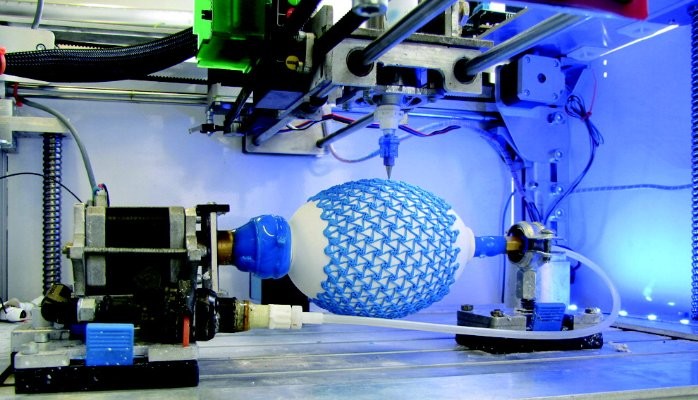Introduction
For nearly three decades, 3D printing has captivated our imagination, revolutionizing manufacturing and design. However, on the horizon of technological innovation emerges a game-changer—4D Printing. As we delve into this futuristic realm, we witness not just an evolution but a transformation. So, what exactly is 4D Printing, and how does it differentiate itself from its predecessor?
Understanding 4D Printing
At its core, 4D Printing is an extension of 3D Printing, introducing a fourth dimension: time. While 3D Printing constructs objects layer by layer, 4D Printing takes it a step further. The printed object, crafted from programmable and advanced materials, undergoes a metamorphosis when exposed to external stimuli like temperature, light, or other environmental factors.
Initiated by the MIT Self-Assembly Lab, this groundbreaking project merges technology and design, aiming to redefine construction, manufacturing, and performance through self-assembly and programmable material technologies.
The Distinction: 3D vs. 4D Printing
The disparity between 3D and 4D Printing lies in that extra “D.” While 3D Printing replicates a 2D structure layer by layer, 4D Printing introduces the dimension of time. The game-changing aspect of 4D Printing is its ability to alter shape over time, a feat not achievable by its predecessor.
A 4D printed object, akin to its 3D counterpart, undergoes the printing process. However, the magic happens when programmable materials react to external stimuli, causing the object to change its 3D shape and behavior dynamically.
Advantages of 4D Printing
Size Changing Wonders
The most conspicuous advantage of 4D Printing lies in its ability to transcend the limitations of printer size. Through computational folding, objects larger than the printer can accommodate are printed as a single part. This flexibility allows for the creation of objects that can change shape, shrink, and unfold, revolutionizing the possibilities of 3D printing.
Unlocking New Material Frontiers
Beyond size, 4D Printing opens doors to a plethora of materials with properties beyond our current comprehension. The technology experiments with Multimaterial Shape Memory Polymers, substances that actively transform configurations over time in response to environmental stimuli. The potential applications span various industries, notably the health sector, where shape-memory polymers could create devices that adapt to patient needs.
Potential Applications of 4D Printing
Self-Repairing Piping Systems
Imagine plumbing pipes that dynamically adjust their diameter in response to flow rate and water demand. 4D Printing could revolutionize the infrastructure industry by creating self-repairing pipes that adapt to environmental changes, ensuring longevity and sustainability.
Self-Assembly Furniture
Moving beyond the limitations of 3D-printed furniture, 4D Printing introduces the concept of flat boards that, when exposed to water or light, effortlessly transform into intricate furniture pieces. This innovation not only streamlines the manufacturing process but also enhances the adaptability of design.
XL 4D Printing in Extreme Environments
In environments like space, 4D Printing emerges as a beacon of hope. Unlike traditional 3D printing processes that face challenges in space, 4D printed materials could offer transformative solutions. From building bridges to shelters, these materials could autonomously construct or repair structures, mitigating the impact of weather damage.
Medical Marvels
In the medical realm, 4D Printing holds the promise of revolutionizing treatments. Programmable stents designed to navigate the human body, self-reconfiguring proteins responding to patient needs—these are just glimpses of the transformative potential in the medical industry.
Fashion Forward
Imagine clothing that adapts to weather conditions or physical activities. 4D Printing could redefine fashion, creating garments that change shape to enhance comfort and performance. The Self-Assembly Printing Lab from MIT is already exploring applications of 4D technology in the realm of fashion.
The Growing Landscape: 4D Printing Market Synopsis
As we navigate the landscape of 4D Printing, it’s evident that the market is rapidly expanding. In 2022, the global 4D Printing market size reached USD 38.3 Million, and projections indicate it will surge to USD 459.8 Million by 2032, boasting a remarkable CAGR of 26.8%.
The driving force behind this growth is the demand for intelligent and self-assembling goods across industries like aerospace, automotive, and healthcare. 4D Printing’s utilization of unique materials such as hydrogels and shape memory polymers sets it apart, offering advantages like reduced material waste, increased design freedom, and faster production times.
Sector-Specific Applications
Aerospace and Military Dominance
Undoubtedly, the aerospace and military sector leads the charge in adopting 4D Printing. The creation of self-assembling and self-repairing parts for satellites, spacecraft, and vehicles underscores the efficiency and lightweight properties that 4D Printing brings to the table.
Automotive Advancements
In the automotive sector, 4D Printing emerges as a pivotal player. The creation of intelligent and self-healing automobile parts showcases the transformative potential of this technology in enhancing durability and functionality.
Healthcare’s Technological Leap
In healthcare, 4D Printing is making significant strides, contributing to the creation of advanced medical equipment, implants, and prosthetics. The focus here is on products that can adapt to the body’s changing needs over time, ultimately enhancing patient outcomes.
The Rise of Asia Pacific
Looking ahead, the Asia Pacific region is poised for unprecedented growth in the 4D Printing market. With a surge in advanced manufacturing technologies and key 4D printing technology suppliers, coupled with substantial R&D expenditures in countries like China and India, the region is set to dominate the sector’s expansion.
In conclusion, 4D Printing isn’t just a technological evolution; it’s a revolution reshaping industries and challenging the boundaries of what’s possible. As we witness the rise of this transformative technology, its impact on aerospace, automotive, healthcare, and beyond is undeniable. The journey into the fourth dimension has begun, and the future promises nothing short of awe-inspiring innovation.

